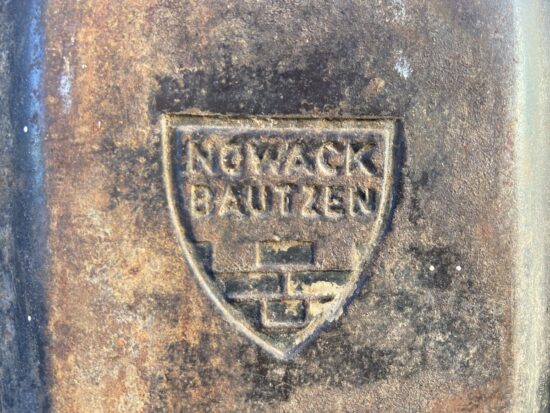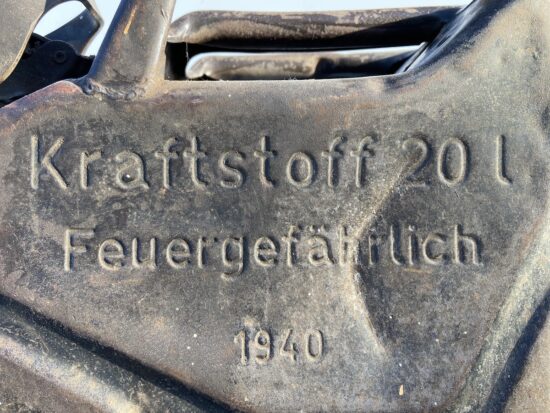Jerrycan Wehrmacht WW2
The Wehrmacht-Einheitskanister, as it was known in Germany, was first developed in 1937 by the Müller engineering firm in Schwelm to a design by their chief engineer Vinzenz Grünvogel. A similar design was used in 1936 during the Spanish Civil War, where they had a company logo for Ambi-Budd Presswerk GmbH. Among others, the Wehrmacht had specified that a soldier should be able to carry either two full containers or four empty ones, which is the reason the triple handles were fitted. To achieve the required filling and draining speed, it was fitted with a large spout and flip top closure. A hole in the closure retainer made it possible to fit a securing pin or wire with a lead seal. The rectangular shape made it stackable. The recessed welded seam stiffened the container and protected the seam from impact damage. The indentations ensured a full can would not be severely damaged when falling from a vehicle, while a dip coat of paint on the inside protected it from corrosion.
By 1939 the German military had thousands of such cans stockpiled in anticipation of war. Motorized troops were issued the cans with lengths of rubber hose in order to siphon fuel from any available source, a way to aid their rapid advance through Poland at the start of the Second World War.



